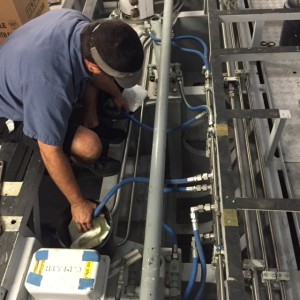 Every system on a mega yacht is important to the overall comfort and safety of the vessel and vessel’s using hydraulics are no exception. So how often should a hydraulic system, like those used for the steering, stabilizers, bow thrusters or windlass operations be flushed? To be on the safe side, a sample of the hydraulic fluids should be tested every six to 12 months or whenever the system is opened and potentially exposed to outside contaminants, you suspect that water may have infiltrated the tank or metal particles are found in the oil.
Every system on a mega yacht is important to the overall comfort and safety of the vessel and vessel’s using hydraulics are no exception. So how often should a hydraulic system, like those used for the steering, stabilizers, bow thrusters or windlass operations be flushed? To be on the safe side, a sample of the hydraulic fluids should be tested every six to 12 months or whenever the system is opened and potentially exposed to outside contaminants, you suspect that water may have infiltrated the tank or metal particles are found in the oil.
There are three methods for flushing a hydraulic system. The first is a simple drain, filter, fill approach referred to in our shop as a DFF. This type of flush is actual more of an “oil change” and is typically recommended for routine maintenance. It is not appropriate where a more serious condition such as water, metal particles or other contaminants are found in the oil. In this scenario, we would drain the hydraulic tank, change out the filters and refill the tank with hydraulic fluid. Pretty straight forward.
The second method, known as a double oil and filter change, requires us to drain the hydraulic tank and fill with fresh oil that will be circulated using on-board system pumps. This method would be suggested under a few conditions; many years since last oil change, requirement to change oil types, minor discoloration of oil, etc. This method involves an initial oil drain from the tank and low points in the system and filter change which can expel a large percentage of contaminants and degraded fluid. We would then fill the tank to the minimum level allowable to still safely work and circulate the oil until operating temperature is achieved. The oil is drained again and the filters changed for a second time before re-filling the hydraulic tank with fluid. For best results, the system should be drained as thoroughly as possible including the tank and manually cleaned.
The last option is more time consuming and costly and is used when there is known contamination of water or metal particles. This method often uses special high pressure pumps or power flushing rigs. Some of these pumps or rigs have directional valves that enable flushing direction to be changed which can assist in dislodging contaminants from dead spaces throughout the system. As in previous methods, the first step is to drain all old hydraulic fluid from the system and refill with a low viscosity fluid that will be circulated at high velocities to create turbulent flow conditions that equate to a Reynolds number of more than 2,000. This process would be repeated as needed until there is no longer any contaminants present in the filters or fluid. We would also remove, inspect and when necessary replace any hoses, cylinders and valves that are damaged.
Just like changing the oil in your car or any other mechanical device, hydraulic systems on your yacht need care and attention to keep them performing in peak conditions for years to come.





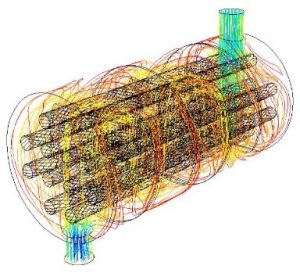 This particular model was a shell and tube design. As its name implies, this type of heat exchanger consists of a shell (a large
This particular model was a shell and tube design. As its name implies, this type of heat exchanger consists of a shell (a large 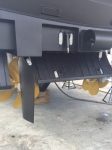


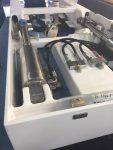 From time to time, we see some pretty old yachts come into Lauderdale Marine Center as was the case with a 30+ year old Feadship. This old gal was in need of some work to bring her back to her glory days. We were hired to give her hydraulic royal boarding ladder a “face lift.” A hydraulic royal boarding ladder is side mounted typically at mid-ship that retracts using hydraulic folding mechanisms when not in use, leaving your deck free of obstacles.
From time to time, we see some pretty old yachts come into Lauderdale Marine Center as was the case with a 30+ year old Feadship. This old gal was in need of some work to bring her back to her glory days. We were hired to give her hydraulic royal boarding ladder a “face lift.” A hydraulic royal boarding ladder is side mounted typically at mid-ship that retracts using hydraulic folding mechanisms when not in use, leaving your deck free of obstacles.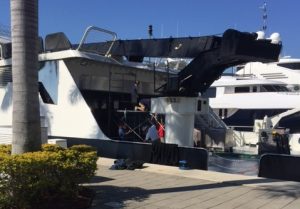
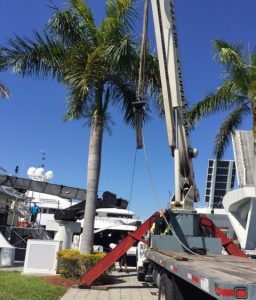 for our hydraulic technicians to reach and secure the cylinders for removal from the boat. We then rented a boom truck with a 73 foot reach from a local business to remove the luffing cylinders from the yacht and place on our sister company,
for our hydraulic technicians to reach and secure the cylinders for removal from the boat. We then rented a boom truck with a 73 foot reach from a local business to remove the luffing cylinders from the yacht and place on our sister company, 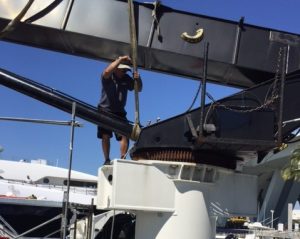
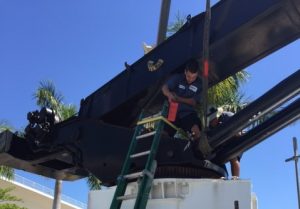 attached to the boom truck crane. Installing the pin on a crane of this size takes balance and a little brute force! Once in place, we released the straps from the boom truck crane and using straps and the chain come-along ratchets, raised the luffing cylinders into place for securing the top to the crane. We then reattached the hydraulic hoses to the yacht’s crane so we could use the boat’s hydraulic power to extend the luffing
attached to the boom truck crane. Installing the pin on a crane of this size takes balance and a little brute force! Once in place, we released the straps from the boom truck crane and using straps and the chain come-along ratchets, raised the luffing cylinders into place for securing the top to the crane. We then reattached the hydraulic hoses to the yacht’s crane so we could use the boat’s hydraulic power to extend the luffing 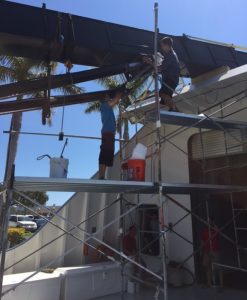 cylinders for the final pin installation. While this work takes experience and knowledge of the process, performing the task while standing on scaffolding more than 10 feet of the deck adds to the complexity.
cylinders for the final pin installation. While this work takes experience and knowledge of the process, performing the task while standing on scaffolding more than 10 feet of the deck adds to the complexity.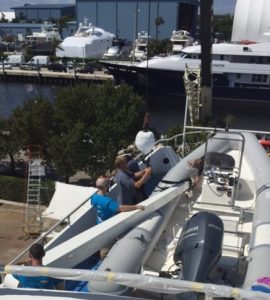
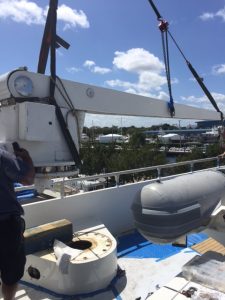 adjust the straps in order to control the unit as it was lifted into the air. Cranes have a very uneven weight distribution and weigh several hundred pounds so without the proper balance applied by the straps and chain come-along, they could twist or slip potentially hitting the deck or the side of the yacht while being lowered to the ground.
adjust the straps in order to control the unit as it was lifted into the air. Cranes have a very uneven weight distribution and weigh several hundred pounds so without the proper balance applied by the straps and chain come-along, they could twist or slip potentially hitting the deck or the side of the yacht while being lowered to the ground.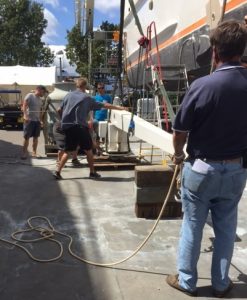
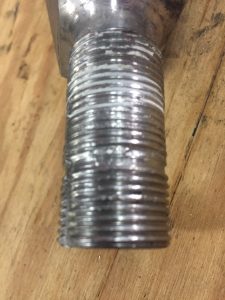
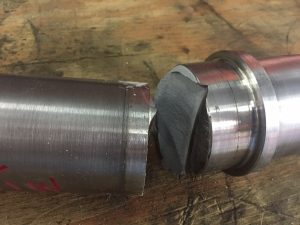
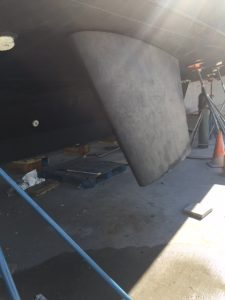 Continuing the work on the 135’ Broward, we have moved on to work on the NAIAD stabilizer system. While NAIAD does not specify an exact interval for performing a major overhaul, it does recommend replacing the lower seals every three years or 4,000 operating hours. Interim service and maintenance should be performed annually but a major overhaul is highly recommended anytime you find water in the grease beyond the outer shaft seals or signs of grease oozing from the inner seals around the shaft. Once salt water compromises the grease the bearings will start to deteriorate and the grease needs to be replaced
Continuing the work on the 135’ Broward, we have moved on to work on the NAIAD stabilizer system. While NAIAD does not specify an exact interval for performing a major overhaul, it does recommend replacing the lower seals every three years or 4,000 operating hours. Interim service and maintenance should be performed annually but a major overhaul is highly recommended anytime you find water in the grease beyond the outer shaft seals or signs of grease oozing from the inner seals around the shaft. Once salt water compromises the grease the bearings will start to deteriorate and the grease needs to be replaced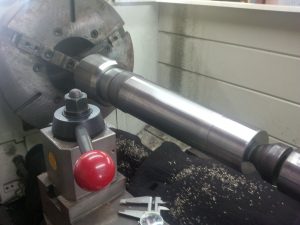

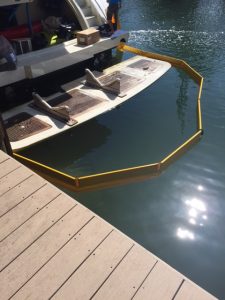
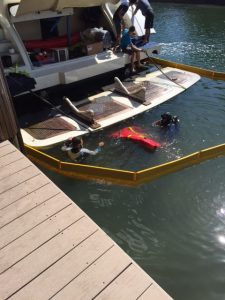
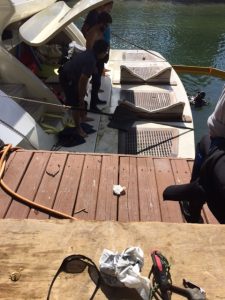
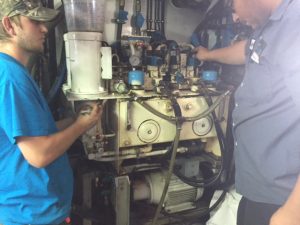 We next disassembled and removed the hydraulic power unit (HPU). The HPU consists mainly of a pair of motors, a reservoir tank and a hydraulic pump. These units can generate a tremendous amount of power to drive most any kind of hydraulic ram. Hydraulic Power Units are based on Pascal’s law of physics, drawing their power from ratios of area and pressure. In this case, the HPU takes the commands from the helm to push the hydraulic rods in the right direction to steer the yacht. A failure of the hydraulic steering system at sea or just about anywhere could prove to be catastrophic.
We next disassembled and removed the hydraulic power unit (HPU). The HPU consists mainly of a pair of motors, a reservoir tank and a hydraulic pump. These units can generate a tremendous amount of power to drive most any kind of hydraulic ram. Hydraulic Power Units are based on Pascal’s law of physics, drawing their power from ratios of area and pressure. In this case, the HPU takes the commands from the helm to push the hydraulic rods in the right direction to steer the yacht. A failure of the hydraulic steering system at sea or just about anywhere could prove to be catastrophic.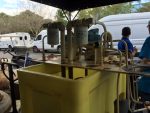 motors out for testing and tested all of the pumps to ensure they were in good working order. We also made all
motors out for testing and tested all of the pumps to ensure they were in good working order. We also made all